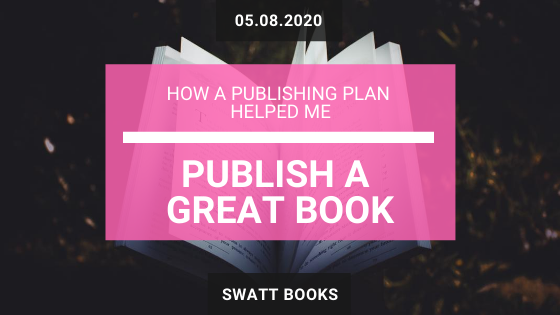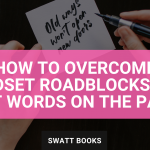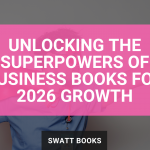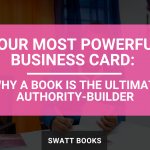In the midst of the Coronavirus Lockdown (May 23rd to be precise), my book “Stress-Free Self-Publishing” marked its 1st year anniversary. With all the uncertainty and chaos going on at the time I didn’t get a chance to properly celebrate my books’ birthday, but it did give me a chance to reflect on how it had impacted both my life and my business since its release.
Some of the knock-on effects from publishing “Stress-Free Self-Publishing” were immediately obvious; like the 300% growth of my business that it generated within the first three months of being on sale. Other effects, like the raising of my profile as a credible expert in professional self-publishing, took time to gain momentum but now not a week goes by that I’m not tagged in a post on social media from an author looking for advice or guidance on self-publish.
But my book, like so many others, did not have an easy start. I really struggled to get to the point where I had what I felt was a credible book to publish. I couldn’t find time to write; I struggled with motivation; I battled with feelings of imposter syndrome, and constantly worried that I was wasting my time. It’s a problem I see many first-time authors struggle with too. The turning point for me was the simple, yet highly effective, task of writing up a publishing plan and I recommend every author do it before they write a single word of their book regardless of what publishing route you plan to take.
A Publishing Plan is a combination of three very important and deceptively simple documents: a book business plan, an ideal reader avatar, and a book skeleton. Each document on its own is fairly easy to generate with a little bit of thought, but when combined together will answer pretty much any question that might arise during your writing and publishing journey and help you overcome the numerous obstacles that will inevitably crop up along the way.
Let’s take a quick look at each part individually:
Book Business Plan
I’ve already written an extensive article on how to write an effective book business plan, which you can find here. But to summarise, a great business plan aims to answer 6 fundamental questions about your book.
- Who is your target audience?
- What is the key message that you want your readers to get from your book?
- Where does your book need to be available in order to reach your audience?
- Why are you writing this book, and why should your readers care?
- How are you going to write/publish/pay for your book?
- When do you want your book to be finished and on sale?
By answering these six questions, you are in effect treating your book in the exact same way that you would treat a business. The answers that you generate from these questions will form the basis for your marketing plan, a realistic budget, and a strategy for getting your book finished and into the hands of your readers.
Some of these questions will require a little bit of research, but I assure you that it is worth putting the time in now to do that research as opposed to getting stuck halfway through and losing momentum.
Ideal Reader Avatar
I always recommend authors to generate a separate Ideal Reader Avatar document when working on the Who question of the Book Business Plan. It ensures that you really get to know your reader inside and out. What motivates them? What are their pain points? What problems do they have that you can solve for them? Where do they hang out? What other books/magazines/blogs do they already read?
The more you know about your reader, the more you can write specifically for them. By tailoring your language to them specifically, they will go away from reading your book with the feeling that you were speaking directly to them, and not in a broader general way.
It also helps you to focus your marketing efforts and use language and messaging that will resonate with your ideal reader and motivate them to act and buy your book. If you already know where they hang out, then you know where you should target your marketing efforts as opposed to using a less reliable scattergun method.
Another great byproduct of getting to know your ideal reader is that your book becomes less about you and more about servicing other people. When you are struggling for motivation, this can often be the catalyst that motivates you into action. It becomes harder to ignore deadlines when they aren’t just arbitrary dates that you have picked out of thin air but are tied to being required in order to help your potential clients.
Again, I have an extensive blog article that I wrote on the topic of Ideal Reader Avatars and the sorts of questions you need to ask yourself in order to really flesh out who your reader is. You can read that article here.
Book Skeleton
The final document that you need as part of your Publishing Plan is a Book Skeleton. This is an offshoot of the What question from the Book Business Plan and is probably the one document out of the three that will help you the most initially. It takes the question of what is the key message that you want your readers to get from your book and expands it into a list of chapters and headings that will allow you to just sit and write and not have to worry about what to write about.
The process of putting together a Book Skeleton is very straight forward. You start with the answer to the question “What is the key message that you want your readers to get from your book” from your Book Business Plan. That is your overarching theme of the book.
You then break that down into sections. Think about the different aspects of your main theme that you could talk about. For example, in “Stress-Free Self-Publishing” my overarching theme is helping authors to self-publish professionally. I broke that down to sections like Before You Start, Editing, Book Design, the Publishing Process, and Marketing. Each of those sections then became a chapter in the book; sometimes with different titles but the content was the same.
I always recommend taking things one step further and breaking each chapter down into the different subsections, and these then become the main headings within each chapter. For example, with the Editing chapter in “Stress-Free Self-Publishing” I broke it down to Why editing is important, Different types of editing, Why hire a professional, How you can help your editor, and a bit about Peer Review.
By doing this process and working out in advance what you’re going to write about, it makes the process of actually writing the manuscript so much easier. You never have to worry about blank page syndrome or writers’ block, because you a simply filling in the blanks from your Book Skeleton.
It also makes the issue of finding time to write a bit of a non-starter. Because you already know what you are going to write, you can make use of much smaller blocks of time. With “Stress-Free Self-Publishing” and my upcoming book “From Broken to Brave” I was able to effectively use just 30 minutes each day to write. I would sit down with my morning coffee before going into my office or checking my emails and I would look through my Book Skeleton to select a single heading that I felt motivated to write about at that particular time. I would write on that one topic and then stop to go about the rest of my day. On the days that I just was not motivated to write, I would read through already written sections and make notes of what could be improved when it came time to do my self-edit.
By using this method, you could have the 1st draft of an average non-fiction book (around 12 chapters with 5 headings per chapter) completed in 3 months; and that’s without doing any writing on the weekends! No matter how busy your life is, with a bit of planning you can find 30 minutes each day. But I advise that you try to make it the same 30 minutes each day so that your brain starts to associate that time with writing and being creative. If writing doesn’t come naturally it will take a bit of time to get used to and build the habit, but the brain is like a muscle that you can train – it just takes perseverance and repetition.
Conclusion
I can hand-on-heart say that without taking the time to work through producing these three documents when I did, “Stress-Free Self-Publishing” would never have been published. I would have remained stuck in the cycle of procrastination, worry, stress and doubt. As a result of thinking about the Who, What, Where, How, Why, and When of my book, “Stress-Free Self-Publishing” has been a phenomenal selling tool for me, and an achievement that I am immensely proud of.
By taking the lessons I learned from my first book and writing a Publishing Plan from day one of my second book, “From Broken to Brave”, I’ve been able to go from idea to being on track to publish this coming October in 8 months and with little to none of the stress that I experienced with “Stress-Free Self-Publishing”.
Do I encourage every author, regardless of experience or planned publishing route, to take the time and do this one exercise – ideally before you write a single work, but if you have started writing, still do the plan anyway… you’d be surprised at how much easier becomes afterwards.






Trackbacks/Pingbacks